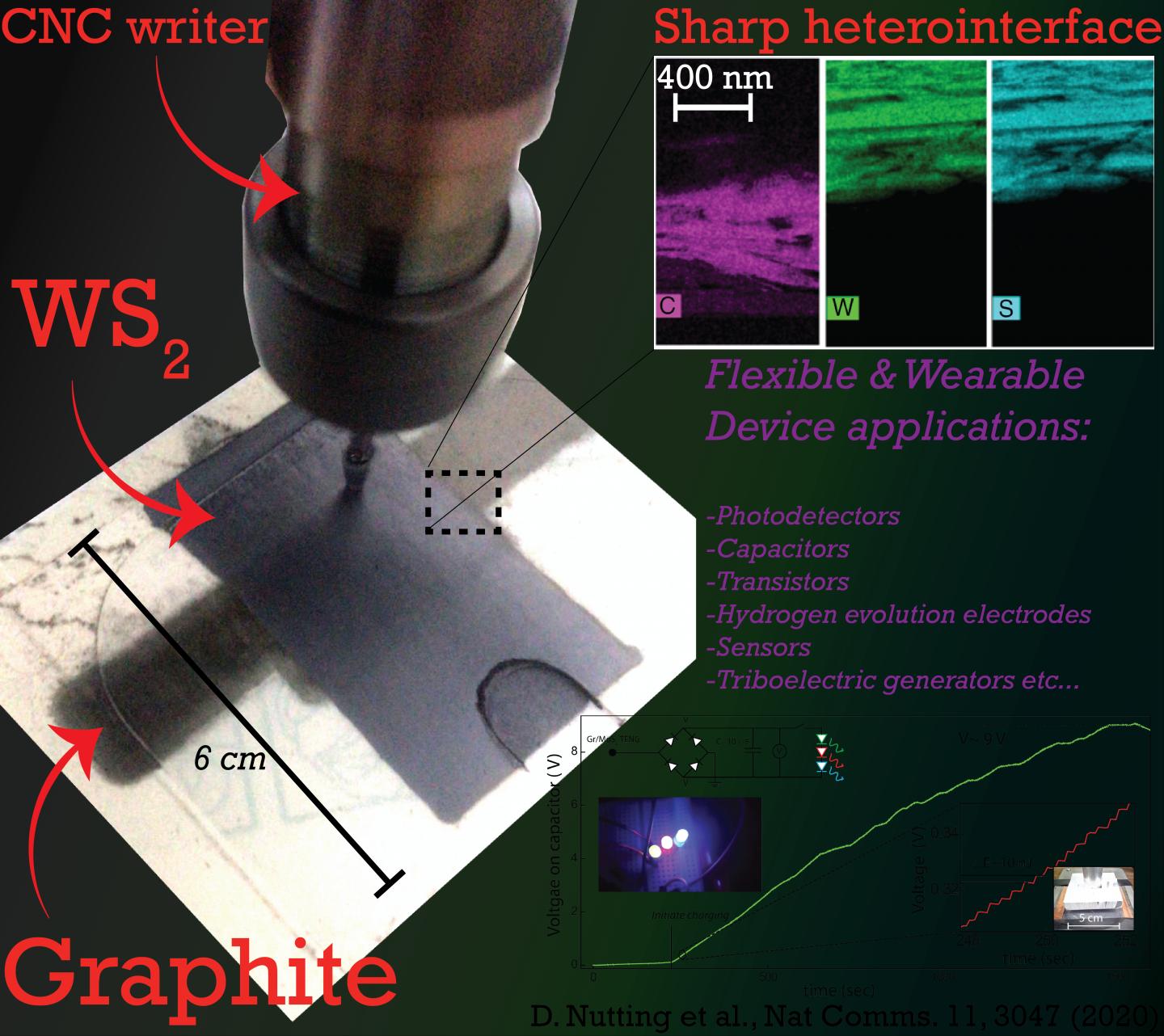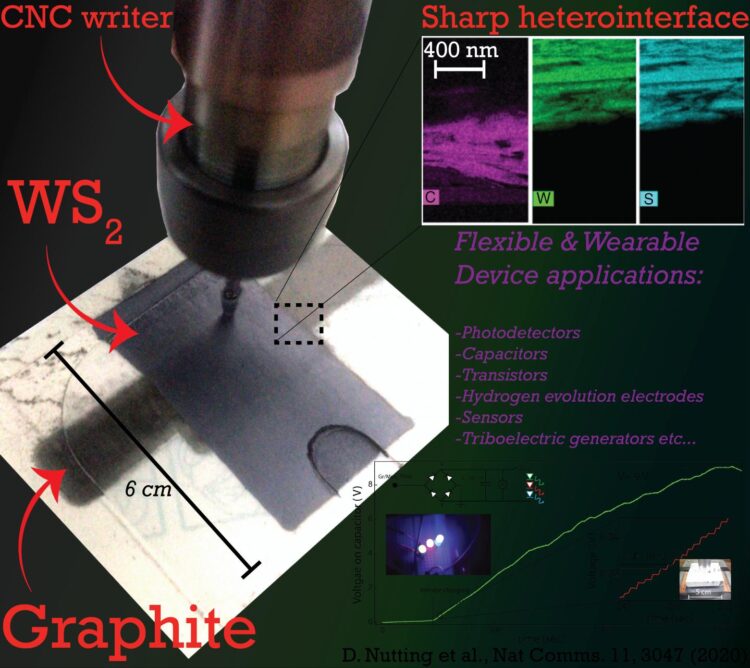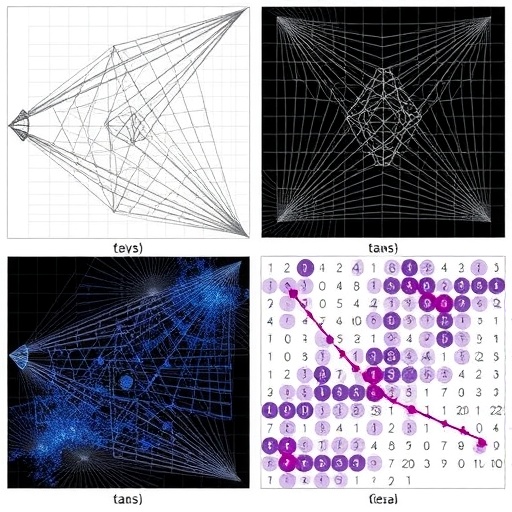
Credit: Darren Nutting and Dr Freddie Withers/ University of Exeter
Researchers at the University of Exeter have developed a pioneering production method for heterostructure devices, based on 2D materials such as graphene.
The new study, published in Nature Communications, focuses on a production method, based around mechanical abrasion, where multilayer structures are formed through directly abrading different Van der Waals material powders directly on top of one another.
The new technique saw sharp heterointerfaces emerge for certain heterostructure combinations. The results pave the way for a wide range of heterointerface based devices to be opened up.
To demonstrate the applicability of this method, researchers demonstrated a multitude of different functional devices such as resistors, capacitors, transistors, diodes and photovoltaics.
The work also demonstrated the use of these films for energy applications such as in triboelectric nanogenerator devices and as a catalyst in the hydrogen evolution reaction.
Darren Nutting, from the University of Exeter and co-author of the study said: “The production method is really simple, you can go from bare substrate to functional heterostructure device within about 10 minutes.
“This is all without the need for complex growth conditions, 20 hours of ultra-sonication or messy liquid phase production.
“The method is applicable to any 2D material crystal, and can easily be automated to produce heterostructures of arbitrary size and complexity. This allows for the production of a plethora of device possibilities with superior performance to those created using more complex methods.”
Dr Freddie Withers, also from the University of Exeter and lead author added: “The most interesting and surprising aspect of this work is that sharply defined heterointerfaces can be realised through direct abrasion, which we initially expected would lead to an intermixing of materials when directly abrading layer by layer. This observation allows for a large number of different devices to be realised through an extremely simple and low-cost fabrication process.
“We also found that the performance of our materials significantly outperform the performance of competitive scalable 2D materials production technologies. We think this is due to larger crystallite sizes and cleaner crystallite interfaces within our films. Considering the rudimentary development of the abrasive process thus far, it will be interesting to see how far we can push the performance levels.”
Heterostructures formed through abraded van der Waals materials is published in Nature Communications.
###
Media Contact
Duncan Sandes
[email protected]
Related Journal Article
http://dx.





